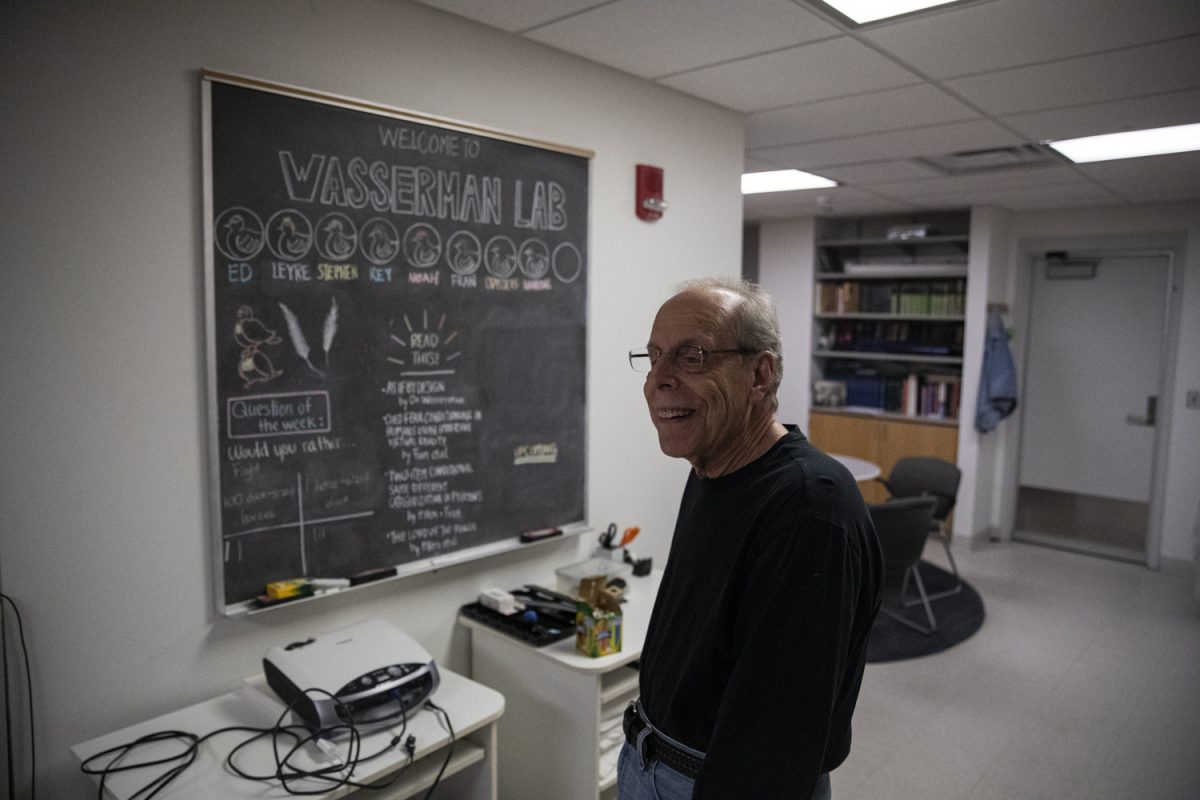University of Iowa researchers are studying pigeons to better understand artificial intelligence and decision-making processes. These findings may make the term “bird brain” obsolete.
UI professor of psychology Edward Wasserman co-authored a study with Ohio State University psychology professor Brandon Turner. The duo found that pigeons learn to identify different stimuli using the same strategies as artificial intelligence.
Instructing and studying psychology at the UI since 1972, Wasserman said he has worked with pigeons for over 50 years.
“I started in human learning and found animal learning more fun, more interesting, and also more challenging,” he said.
Wasserman said to succeed, animals must adapt to the world and learn things they could never have anticipated. Additionally, to navigate their worlds they draw from past experiences like humans.
Because the world is always changing, understanding how organisms adapt to their world is important, he added, noting that deeper questions swirl around how brains mediate these changes.
“What about our experiences changes our brains, and how do we then generate new adaptive responses based on our past?” Wasserman said. “The answer seems to be, for the pigeon, in a pretty simple way. To say that it’s a simple mechanism doesn’t mean that it can’t deal with complex problems.”
To test the mechanism, he developed a difficult task for pigeons. The study found that the birds were able to successfully categorize images using an effective technique.
The pigeons were shown a series of circles filled with lines of differing widths and orientations. Depending on the circles, the pigeons pressed a red button or a blue button to identify familiar stimuli.
“When the pigeons get it, right, they get food,” Wasserman said. “When they get it wrong, they don’t get food, and they have to repeat the trial.”
Wasserman said the pigeons will then associate particular input stimuli with specific responses, and that feedback in the form of food makes their response stronger.
The associative mechanism used in the task is effective for pigeons, he said, but works for people and computers as well.
“Computers aren’t smart. They aren’t clever. They do what they do because we’ve put into them the learning mechanisms that you and I and pigeons use,” he said. “We’re learning how the pigeon seems to work as though it’s a machine and then we understand that the machines that we’ve programmed respond as we would.”
Turner said this study shows that the power of AI may receive too much praise because the same strategies for recognition are naturally occurring in one of the humbler animals like a pigeon.
“What we see is that the same computational principles underlie both types of behaviors, so I think that that’s something that’s pretty profound,” he said.



